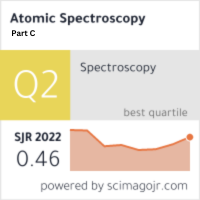Assessment of Serum Hyperglycosylated hCG Marker in a Pregnant Women with Pre-eclampsia
Keywords:
Pre-eclampsia in pregnant women, Hyperglycosylated Human Chorionic Gonadotropin and preeclampsia, High Albumin in Urine in association with preeclampsia, Gestational Hypertension with exclusion of chronic hypertension and gestational diabetes melletus, Urgent pregnant women comes to emergency and converted to cesarian section and Postpartum Complication.Abstract
The background: A possible biomarker for the early detection of pre-eclampsia is the level of hyperglycosylated human chorionic gonadotropin (hCG-h) during the first trimester. To confirm pre-eclampsia (PE), as in studies in the first trimester, and its subtypes early-onset, late-onset, severe, and mild PE in case-control research, this study sought to assess the performance of clinical risk variables, mean arterial pressure (MAP), and hCG-h in the third trimester.
Aim of study: Pre-eclampsia patients in the third trimester are being studied to see how well clinical risk indicators for mean arterial pressure (MAP) and hyperglycosylated hCG perform as pre-eclampsia predictors.
Patient and Method: This case control study was included 48 (16 patient excluded because chronic hypertension and GDM) pregnant women with preeclampsia and 44 (12 control was excluded because anemia and GDM) Normal pregnant women aged 20-40y. samples were collected from Baghdad teaching hospital period from June 2021 to September 2021.The blood sample directly transferred into disposable gel tube and left for 15-30 minutes at 37 ˚C for clot formation to evaluate H-HCG, method of measurement with ELISA Kit.
Result: The outcomes demonstrated that the level of serum Hyperglycosylated HCG in preeclampsia patient 238.53 ± 59.35 were significantly decreases (P value < 0.05) as comparison to healthy pregnant women.
Conclusion: Serum Hyperglycosylated HCG were significantly decreased among PE women than healthy women, so it can be used as a biomarker to predict preeclampsia.



